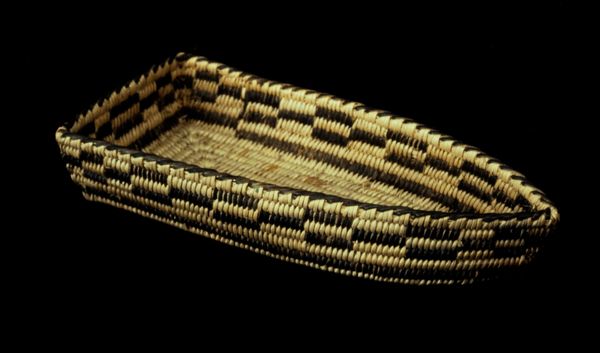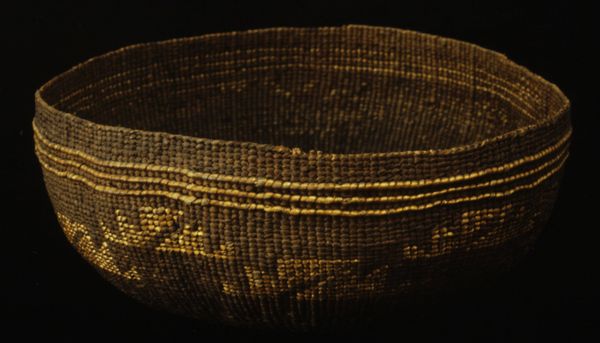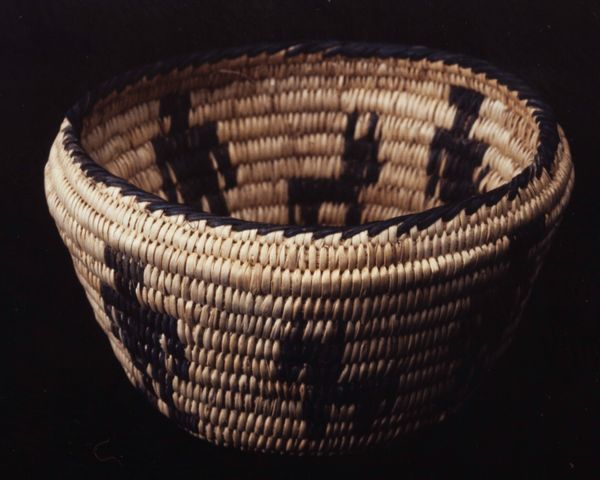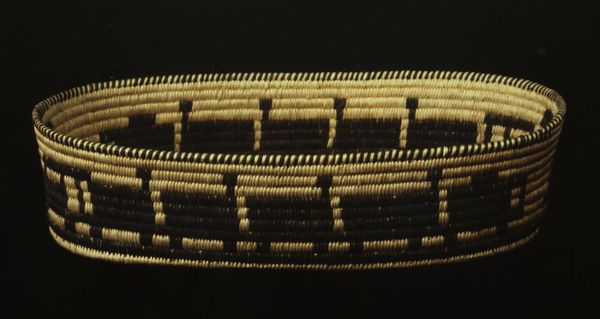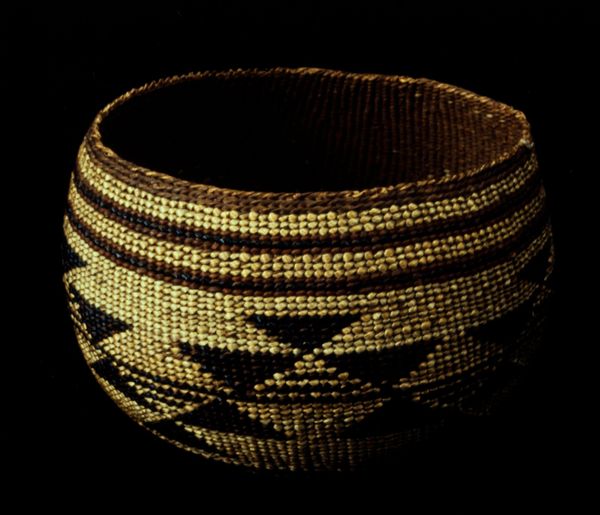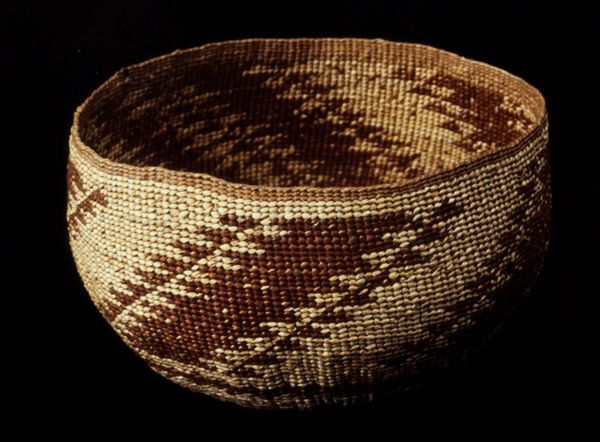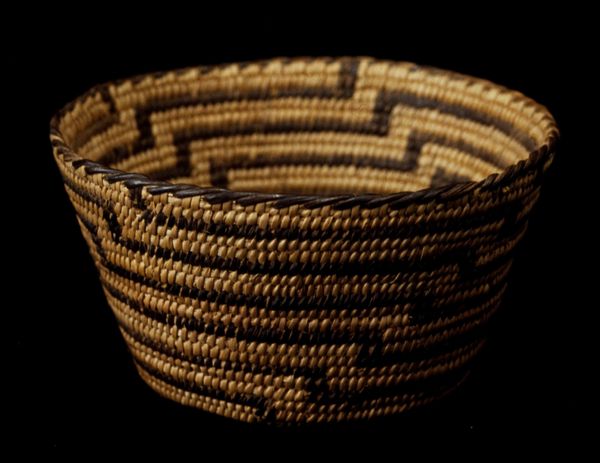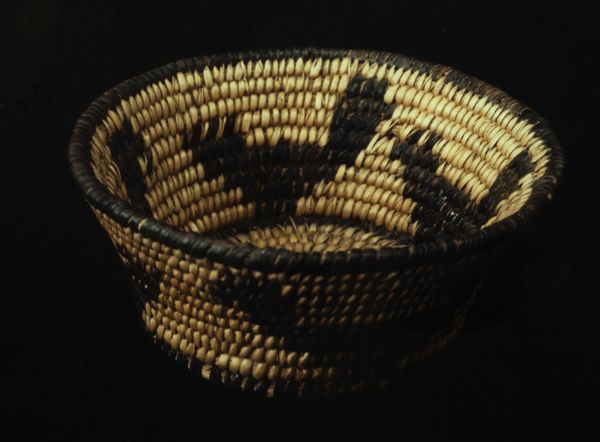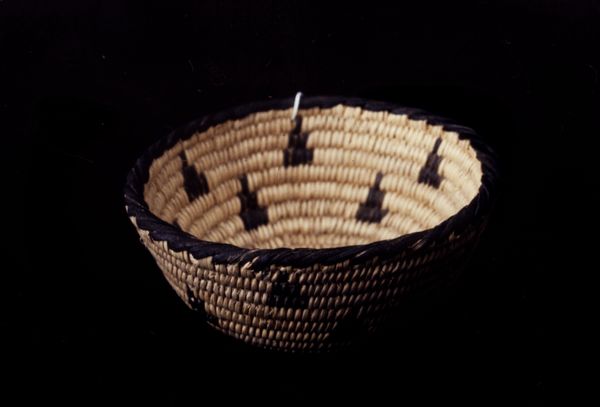
fibre-art, weaving, textile
#
fibre-art
#
weaving
#
textile
#
indigenous-americas
Dimensions: 2 3/4 x 4 3/4 x 4 3/4 in. (7.0 x 12.1 x 12.1 cm)
Copyright: Public Domain
Editor: So, this "Basket," made by the Tlingit people sometime in the 19th or 20th century, it's a textile, some sort of fibre art. It strikes me as incredibly intricate, like a puzzle of textures and subtle patterns. What do you make of it? Curator: The Tlingit basket. It speaks to survival and artistry. Do you see how the woven patterns create visual rhythms? These aren’t just decorations; they are laden with meaning. Consider how repeated forms of horizontal blocks, which evoke landscapes of memory. What emotional associations do these geometric forms conjure for you? Editor: Well, the colours and the rigid patterns seem very grounded, stable...almost stoic, in a way. But I am wondering, is that my own reading into it? Curator: A very astute observation! You’re engaging with its visual language. Each shape might have represented different concepts – perhaps clan affiliations, or important events, or natural cycles – anchoring cultural memory and identity to this object. And the weaving technique itself can be seen as a symbolic act of holding together, ensuring cultural continuity. Think about the labour that went into preparing the materials and patiently interweaving these. What feelings emerge thinking of the weaver’s presence invested into each plait? Editor: The labour is clear. Knowing how it might carry encoded meanings... I will think about it differently now. It is a reminder about the layering in artworks, from its use to its symbols! Curator: Indeed. It allows for different entry points into the history embedded in this functional and culturally rich piece. We went beyond simply viewing an object, and started considering an entire network of stories woven right into its structure!
Comments
No comments
Be the first to comment and join the conversation on the ultimate creative platform.


